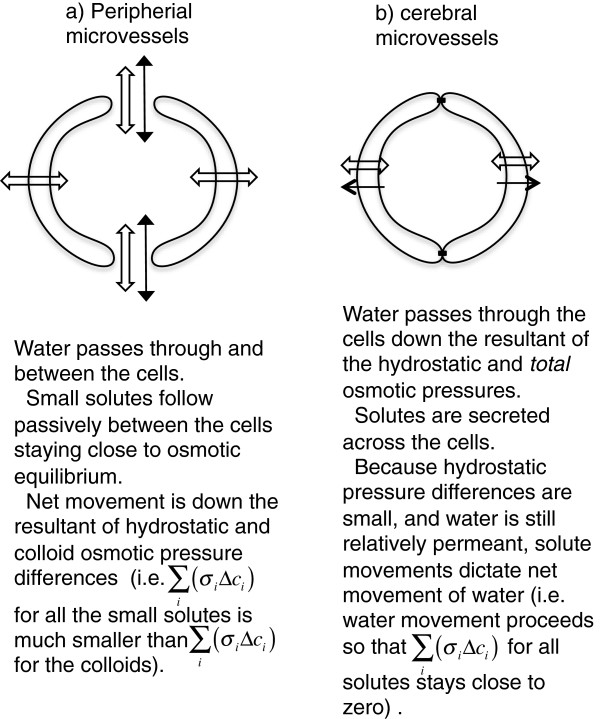Figure 5.

Comparisons of fluid transport across peripheral and cerebral microvessels. In the periphery a) small solutes cross the vessel walls via gaps between the cells. Small solute movement is rapid, therefore their concentration gradients are small and thus unlike the large solutes, the colloids, the small solutes do not oppose the movements of water. Thus except during brief transients, e.g. when osmotic gradients are artificially imposed, net fluid movement is governed by the hydrostatic and colloid osmotic pressure differences between blood and surrounding tissues. In the brain b) paracellular movement is limited by tight junctions. Thus small solutes cross the vessel walls only slowly and the direction and extent of their movement is determined by specific transporters. Hence they are as effective as the large solutes in producing osmotic gradients that dictate the extent of water movement into or out of the surrounding tissue.
